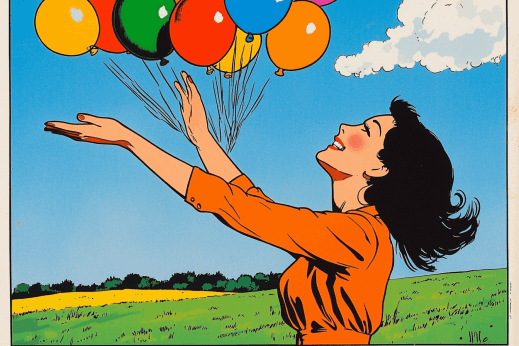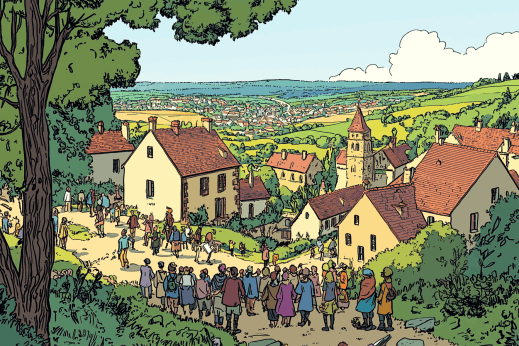| Sanātana – Bhagavad Gītā | 2 : 47 |
कर्मण्येवाधिकारस्ते मा फलेषु कदाचन ।
मा कर्मफलहेतुर्भूर् मा ते सङ्गोऽस्त्वकर्मणि ॥
karmaṇy evādhikāras te mā phaleṣu kadācana;
mā karma‑phala‑hetur bhūr mā te saṅgo ’stvakarmaṇi.
You have the right to act, never to the fruits
(accept the rest).
Do not imagine yourself the sole cause, nor
cling to inaction.
|
| Sanātana – Bhagavad Gītā | 18 : 9 |
नियतं सङ्गरहितम् अरागद्वेषतः कृतम् ।
अफलप्रेप्सुना कर्म यत्तत् सात्त्विकम् उच्यते ॥
niyataṁ saṅga‑rahitam arāga‑dveṣataḥ kṛtam;
aphala‑prepsunā karma yat tat sāttvikam ucyate.
Duty done without attachment,
seeking no fruit,
benefits the whole order and is called
sāttvika renunciation.
|
| Buddhism – Dhammapada | 1 : 1‑2 |
मनोपुब्बङ्गमा धम्मा मनोसेट्ठा मनोमया;
मनसा च पदुट्ठेन भासति वा करोति वा,
ततो नं दुःखमन्वेति चक्कं व वहतो पदं।
मनोपुब्बङ्गमा धम्मा मनोसेट्ठा मनोमया;
मनसा च पसन्नेन भासति वा करोति वा,
ततो नं सुखमन्वेति छायाव अनपायिनी।
Manopubbaṅgamā dhammā, manoseṭṭhā manomayā …
Mind leads action; with impure intent suffering follows,
with pure intent wholesome deeds bloom and
happiness attends;
one must cultivate purity and
accept the ripening of karmic seeds.
|
| Buddhism – Aṅguttara Nikāya | III .415 |
“चेतना हं, भिक्खवे, कम्मं वदामि;
चेतयित्वा कम्मं कर॒ोति.
अप्पमादेन sampādetha.”
“Cetanā haṃ bhikkhave kammaṃ vadāmi;
having intended one acts;
strive on with diligence.”
Intention is the action;
fruit ripens via many causes.
Persevere and
accept the timing.
|
| Christianity – Matthew (KJV) | 6 : 33‑34 |
Seek ye first the kingdom of God, and his righteousness;
all these things shall be added.
Take no thought for the morrow:
tomorrow will take thought for the things of itself.
|
| Christianity – James (KJV) | 2 : 26 |
As the body without the spirit is dead, so
faith without works is dead;
living faith serves others and
endures testing.
|
| Islam – Qurʼān | 3 : 159 |
فَبِمَا رَحْمَةٍ مِّنَ ٱللَّهِ لِنتَ لَهُمْ …
فَإِذَا عَزَمْتَ فَتَوَكَّلْ عَلَى ٱللَّهِ ۚ
إِنَّ ٱللَّهَ يُحِبُّ ٱلْمُتَوَكِّلِينَ
fa‑bi‑mā raḥmatin mina llāhi linta lahum …
fa‑idhā ʿazamta fa‑tawakkal ʿalā llāh …
Decide firmly (act) then
trust in God; God loves those who
persevere in reliance and spread
gentleness.
|
| Islam – Qurʼān | 2 : 110 |
وَأَقِيمُوا ٱلصَّلَوٰةَ وَآتُوا ٱلزَّكَوٰةَ ۚ
وَمَا تُقَدِّمُوا لِأَنفُسِكُم مِّنْ خَيْرٍ
تَجِدُوهُ عِندَ ٱللَّهِ
wa‑aqīmū ṣ‑ṣalāta wa‑ātū z‑zakāta …
Establish prayer and charity;
whatever good you send forth you will
find with Allah; He rewards
steadfast practice.
|
| Judaism – Pirkei Avot | 2 : 16 |
לֹא עָלֶיךָ הַמְּלָאכָה לִגְמוֹר,
וְלֹא אַתָּה בֶן־חוֹרִין לִבָּטֵל מִמֶּנָּה
Lo ʿalecha ha‑melākhā ligmor,
ve‑loʾ atta ben‑ḥorīn liveṭḗl mimenna.
It is not upon you to finish the work,
yet you are not free to desist;
each effort adds to the whole,
accepting human limits.
|
| Judaism – Proverbs | 16 : 3 |
גֹּל אֶל־יְהוָה מַעֲשֶׂיךָ,
וְיִכֹּנוּ מַחְשְׁבֹתֶיךָ
Gol el Adonai maʿasecha,
ve‑yikkōnū maḥshəvōtecha.
Commit your works to the Lord and
your plans will be established,
shaping wider order through
steady trust.
|
| Sikhism – Guru Granth Sāhib | p 286 |
ਸਤਿਗੁਰ ਕੀ ਸੇਵਾ ਸਫਲ ਹੈ, ਜੇ ਕੋ ਕਰੇ ਚਿਤੁ ਲਾਇ;
ਸਰਬ ਸੁਖ ਤਿਨ ਮਿਤ੍ਰਾਂ ਕੈ ਘਰਿ ਵਸਹਿ,
ਜਿਸੁ ਪ੍ਰਭ ਕਿਰਪਾ ਧਾਰਿ.
ਸੇਵਾ ਕਰਤ ਹੋਇ ਨਿਹਕਾਮੀ,
ਸੋ ਹੋਵੈ ਪਰਉਪਕਾਰੀ।
Satgur kī sevā safal hai, je ko kare chit lā‑e …
Service of the True Guru is fruitful;
with focussed mind, one finds peace beyond ask;
selfless service makes one a benefactor of all,
sustained by divine grace.
|
| Taoism – Tao Te Ching | 48 |
為學日益,為道日損。損之又損,以至於無為;
無為 而無不為。
Wéi xué rì yì, wéi dào rì sǔn;
sǔn zhī yòu sǔn, yǐ zhì yú wú‑wéi;
wú‑wéi ér wú bù wéi.
Study adds daily; practicing the Way subtracts daily,
until effortless non‑action,
yet nothing is left undone;
release control and the Tao acts through you.
|
| Confucianism – Analects | 2 : 4 |
子曰:「吾十有五而志於學,三十而立,四十而不惑,
五十而知天命,六十而耳順,七十而從心所欲,不踰矩。」
Zǐ yuē: “Wú shí‑yǒu‑wǔ ér zhì yú xué, sān‑shí ér lì …
qī‑shí ér cóng xīn suǒ yù, bù yú jǔ.”
*At fifteen I set my heart on learning; …
at seventy I could follow my heart’s desire
without overstepping.* Lifelong self‑cultivation benefits the
social order while
accepting each stage.
|
| Stoicism – Epictetus, Enchiridion | § 1 |
Τῶν ὄντων τὰ μὲν ἐφ᾽ ἡμῖν, τὰ δὲ οὐκ ἐφ᾽ ἡμῖν.
τῶν ἐφ᾽ ἡμῖν ἐστὶν γνώμη, ὁρμή,
ἐπιμονή, κ.τ.λ.
Tōn ontōn tà mén eph’ hēmín, tà dè ouk eph’ hēmín …
Some things are up to us, others
not;
freedom is found in the first, peace in > accepting > the second
(release), requiring daily
perseverance.
|




